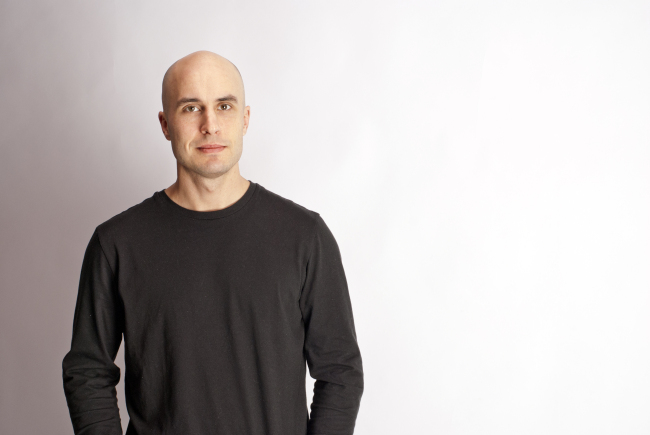An expat designer has teamed up with local firm Ssamzie for a collection of bags, wallets and other items made with recycled leather as part of his push to help fuel Korea’s sustainable design trend.
Sven Schelwach created his design company Taomina several years ago to design high-end sustainable furniture. But when he began lecturing at Hongdae University in Seoul, it led to an unexpected opportunity.
When his students saw his wallet designs, they suggested he approach the firm, as they had a similar style.
“I went to that shop and I really liked their designs, and I really liked the whole storytelling they have and the background story about the production in which they actually employ Korean refugees,” he said.
Sven Schelwach created his design company Taomina several years ago to design high-end sustainable furniture. But when he began lecturing at Hongdae University in Seoul, it led to an unexpected opportunity.
When his students saw his wallet designs, they suggested he approach the firm, as they had a similar style.
“I went to that shop and I really liked their designs, and I really liked the whole storytelling they have and the background story about the production in which they actually employ Korean refugees,” he said.

After talking to the owners of the firm, they began designing the collection.
Schelwach explained that recycled leather was not a new concept, being developed by the owner of German shoemaker Salamander more than 100 years ago. But Korean firms had generally only used it in limited ways, he said.
“Recycled leather is not that new (to Korea), but the way it’s used is new,” Schelwach said, explaining that Korean firms had previously used it mainly as a filler material in belts, shoes and other leather goods.
“It actually has similar properties (to real leather). It ages similarly to leather. It is a little less sturdy than leather and not quite as flexible.”
Another project he recently finished with SWBK, a Korean design firm that runs furniture maker Matter and Matter, also used recycled leather. Like Matter and Matter’s other projects, the desk items he designed used teak wood reclaimed from boats and buildings in Indonesia, combined with recycled leather.
Schelwach pointed out that like many other eco-friendly options, people mistakenly think it is more expensive than the standard alternative.
“In fact it’s cheaper than real leather, and that’s the thing with sustainable design and green design. I think a lot of people nowadays think about these topics and they want to do something in that direction but they think they are more expensive, but it is actually not the case. Green design is often cheaper, if you count all the costs involved,” he said.
But while he is supportive of recycling, his ideas on sustainable design go a lot further. Simply reusing discarded materials is not enough, he said.
“That is tackling the problem at the wrong point,” Schelwach said. “If we think about how we can efficiently recycle something, that’s a good way to think. But the more powerful way is at the starting point to think about how to design things where we don’t have the problem of recycling.”
To this end, he is also consulting with several firms on sustainable design thinking, as well as lecturing.
The variously defined term has its detractors, and some call it a label for a collection of preexisting ideas.
“For me personally it is not so important to discuss whether this label makes 100 percent sense,” said Schelwach. “It is more important to apply what’s behind that label.”
To him, it’s a mixture of making things attractive, usable, feasible and economically viable, but also sustainable. Schelwach gives the example of a booth he designed for a group of cosmetics companies at an event on Jejudo Island. He realized they wanted a look that matched their organic, eco-friendly image, but he pointed out that fairly simple adjustments made a big difference.
For example, designing it in a way that avoided cutting the wood minimized the amount of waste, and using screws instead of glue or nails allowed the wood to be reused.
“It was attractive design-wise, so it was desirable, it was feasible ― actually it was very easy to construct ― and it was viable because it was not more expensive than any other booth; it was in fact cheaper,” he said. “And it was sustainable, because it kept to the eco-friendly narrative and translated those principles into a real design.”
However, too many firms want the eco-friendly tag without the commitment, he said, citing apartment developments that use the term in their branding.
“If you call something “eco village” and you construct it from concrete, steel, glass with bad insulation and bad windows, it doesn’t make sense,” he said. “It carries the name but it’s not translating it into the real product, so I feel that it is important (not only) to support that message but to actually do it.”
By Paul Kerry (paulkerry@heraldcorp.com)
-
Articles by Korea Herald







![[KH Explains] Hyundai's full hybrid edge to pay off amid slow transition to pure EVs](http://res.heraldm.com/phpwas/restmb_idxmake.php?idx=644&simg=/content/image/2024/04/18/20240418050645_0.jpg&u=20240419100350)







![[From the Scene] Monks, Buddhists hail return of remains of Buddhas](http://res.heraldm.com/phpwas/restmb_idxmake.php?idx=652&simg=/content/image/2024/04/19/20240419050617_0.jpg&u=20240419175937)

![[KH Explains] Hyundai's full hybrid edge to pay off amid slow transition to pure EVs](http://res.heraldm.com/phpwas/restmb_idxmake.php?idx=652&simg=/content/image/2024/04/18/20240418050645_0.jpg&u=20240419100350)

![[Today’s K-pop] Illit drops debut single remix](http://res.heraldm.com/phpwas/restmb_idxmake.php?idx=642&simg=/content/image/2024/04/19/20240419050612_0.jpg&u=)